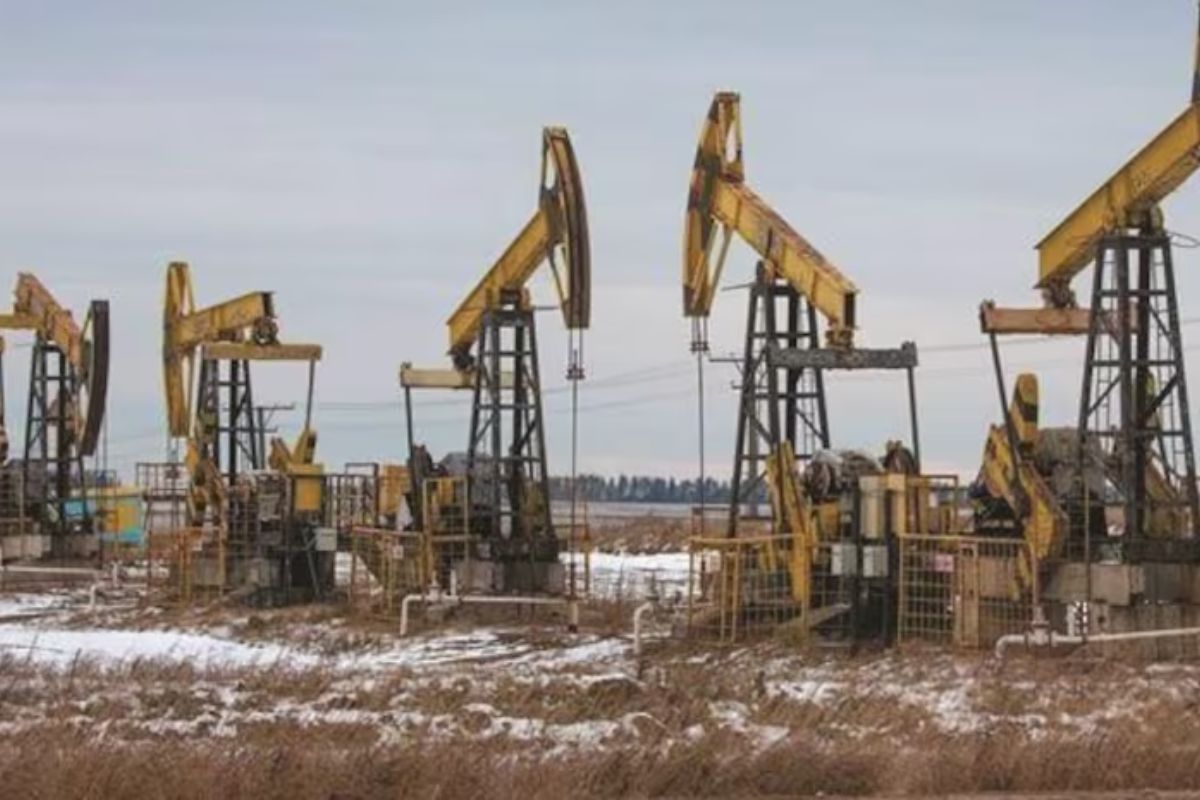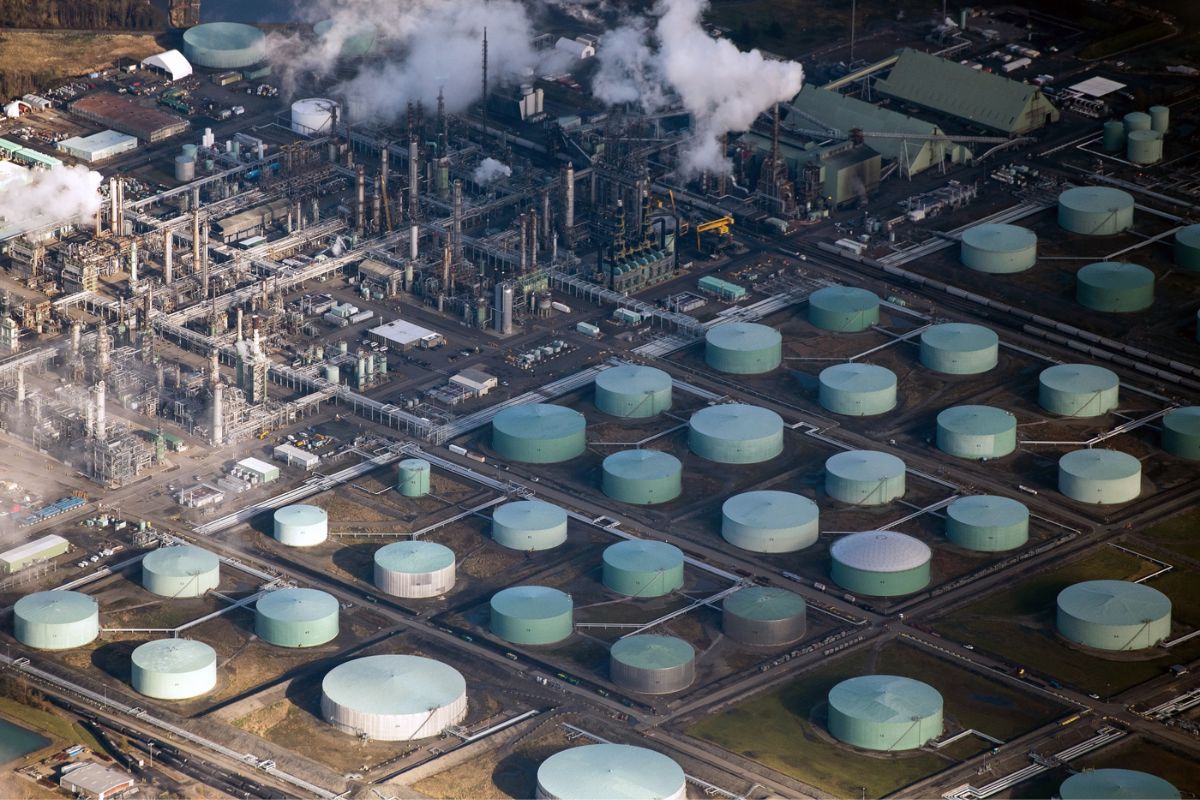Global Push to Replenish Oil: In the intricate web of global oil markets, a recent surge in demand has ignited fervent efforts to replenish dwindling oil stocks. As nations scramble to secure their energy reserves, tensions in the Middle East and geopolitical uncertainties further amplify the urgency.
Analysts are divided on the implications for oil prices and market stability, while the International Energy Agency’s assessment adds a layer of complexity to the unfolding narrative.
With OPEC+ deliberations and Saudi Arabia’s strategic maneuvers in play, the future trajectory of oil markets hangs in the balance, poised to be influenced by unforeseen variables that could shape the world’s energy landscape.
Key Takeaways
- Depleted inventories and geopolitical tensions drive urgent need for stock replenishment.
- Analysts recalibrate strategies amidst market tightness and uncertainty.
- Aggressive purchasing in key regions amplifies global oil demand surge.
- OPEC+ actions and Saudi Arabia’s strategic shift aim to stabilize volatile oil market.
Global Oil Market Dynamics: Depleted Inventories and Tensions in the Middle East
The global oil market is currently in a state of tumult as depleted inventories and escalating tensions in the Middle East create a perfect storm of uncertainty and volatility. With global oil inventories strained due to sanctions on Russia and extended OPEC+ output cuts, the need to replenish stocks in key regions such as China, the United States, and Europe has become urgent. Geopolitical unrest in the Middle East, particularly the Red Sea attacks by Iran-aligned Houthi rebels, has heightened fears of supply disruptions, further fueling the drive to rebuild inventories.
Also Read: IMF Chief Warns: Mideast Growth Faces 2024 Slowdown – Oil Cuts, Gaza Impact
This confluence of factors has sparked a surge in global oil demand as buyers scramble to secure their supply chains amidst growing instability. The push to replenish oil stocks has become a top priority for nations heavily reliant on oil imports, leading to increased competition and price spikes in the market. As tensions continue to escalate in the region, the outlook for oil prices remains precarious, with market dynamics poised on a knife’s edge.
Analysts’ Perspectives on Oil Prices and Market Outlook
Amidst the tumultuous global oil market dynamics driven by depleted inventories and escalating tensions in the Middle East, analysts’ perspectives on oil prices and market outlook are increasingly crucial for navigating the volatile landscape.
Financial powerhouses like Morgan Stanley and energy experts such as FGE are reshaping their views on oil prices, signaling a significant shift in market sentiment. Morgan Stanley’s upward adjustment of its quarterly forecast for Brent crude prices hints at an impending tightness in the oil market, potentially leading to price spikes.
On the other hand, FGE’s warning about a notable counter-seasonal decline in crude and fuel stocks points towards a looming imbalance that could further roil market stability. These revised projections underscore the intricate web of factors influencing oil prices, urging market participants to stay vigilant and adapt swiftly to the evolving market conditions.
As analysts recalibrate their strategies and predictions, the oil market braces for heightened volatility and uncertainty, raising the stakes for all involved.
International Energy Agency’s Assessment and Traders’ Observations
Surprisingly, the International Energy Agency’s assessment is sending shockwaves through the market, intensifying the already fervent scrutiny of traders. As the IEA signals a concerning drop in global inventories, reaching their lowest levels since July 2022, anxiety grips the industry. While December saw a slight uptick, worries linger like a dark cloud on the horizon.
Traders are abuzz with reports of aggressive purchasing sprees in key markets such as China, Europe, and the United States. China’s ambitious restocking plans for the first half of the year and the U.S.’s strategic moves to refill its Strategic Petroleum Reserve are amplifying the tension in an already volatile landscape. The IEA’s assessment and traders’ astute observations are painting a picture of uncertainty and anticipation, keeping the energy sector on edge.
- Fear and Frenzy: Market reactions hit fever pitch.
- Strategic Moves: Countries maneuver to secure their oil futures.
- Uncertainty Looms: Shadows of doubt cast over global supply chains.
- Tension Mounts: Every fluctuation scrutinized for deeper meanings.
- Watchful Eyes: Traders on high alert, anticipating the next seismic shift.
OPEC+ Actions and Saudi Arabia’s Strategic Shift
In the intricate dance of global oil markets, OPEC+ maneuvers and Saudi Arabia’s recent strategic pivot have sent shockwaves through the industry, hinting at potential shifts in the balance of power.
OPEC+, with its continued efforts to control oil supply through output cuts, is facing a critical juncture as Saudi Arabia, a crucial player in the group, unexpectedly decided to halt plans to boost its maximum production capacity. Riyadh’s energy minister justified this move by emphasizing support for the energy transition and highlighting the kingdom’s significant spare capacity, aimed at stabilizing the volatile oil market.
However, skepticism looms large among analysts, with concerns raised by entities like HSBC about a looming long-term imbalance. The fear of OPEC’s supply potentially surpassing global demand is a specter haunting the industry, raising questions about the sustainability of current strategies and the future dynamics of the oil market.
As the dust settles from these seismic shifts, the world watches with bated breath, awaiting the next move in this high-stakes energy chess game.
Future Predictions and Potential Market Influences
The impending oil price surge looms ominously on the horizon, driven by speculative projections and geopolitical intricacies that threaten to reshape the global energy landscape.
- Brace yourselves for a rollercoaster ride of price hikes that could send shockwaves through global markets.
- Will the delicate balance between supply and demand hold, or are we on the brink of a catastrophic oil crisis?
As major players like Saudi Arabia and Russia maneuver their oil production levels, the fate of economies hangs in the balance.
Prepare for a future where every barrel counts, as uncertainties cloud the crystal ball of oil market predictions.
The countdown begins for a showdown of epic proportions, where nations’ strategic decisions will determine the winners and losers in this high-stakes game of black gold.
Conclusion Of Global Push to Replenish Oil
The global push to replenish oil stocks has ignited a surge in demand, creating a volatile market environment.
With depleted inventories and escalating tensions in the Middle East, analysts are closely monitoring oil prices and market dynamics.
The International Energy Agency’s assessment and traders’ observations point towards a precarious situation.
OPEC+ actions and Saudi Arabia’s strategic shift will play a crucial role in shaping future predictions and potential market influences.
Our Reader’s Queries
Q1 Why is the global demand for oil increasing?
A Moreover, oil serves various purposes such as fertilizer production, paint manufacturing, plastics, and numerous other applications unaffected by improving fuel efficiency. Given the expanding global population, the demand for these uses is expected to rise over time.
Q2 What is the global demand for oil and gas?
A In its monthly report on Wednesday, OPEC maintained its projection for global oil demand growth in 2023 at 2.46 million barrels per day (bpd). Similarly, for 2024, OPEC anticipates demand growth of 2.25 million bpd, with no change from the previous month’s assessment.




